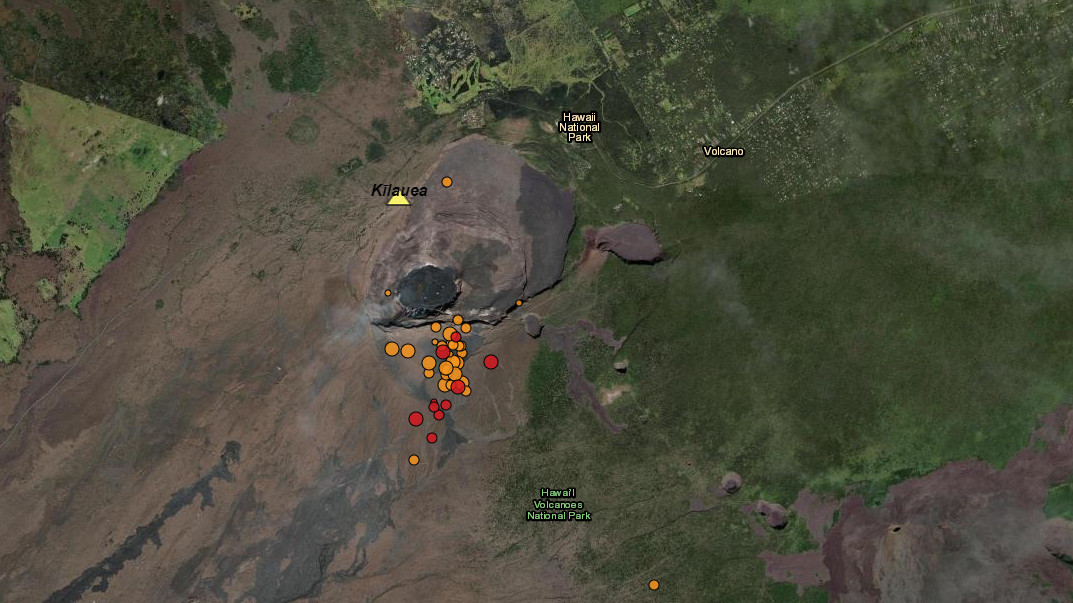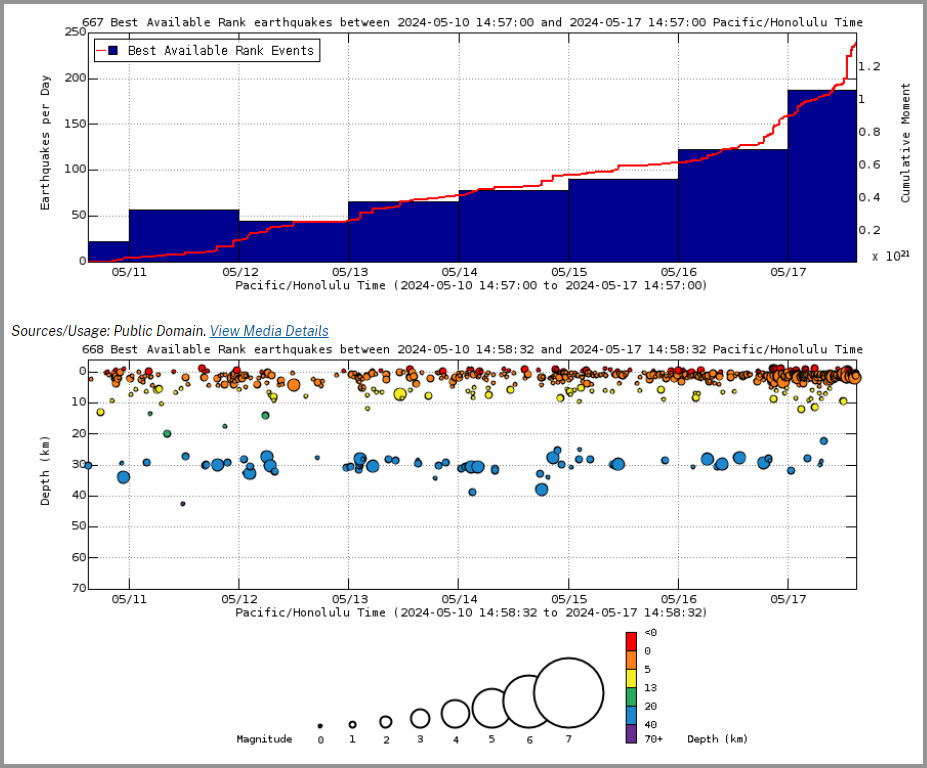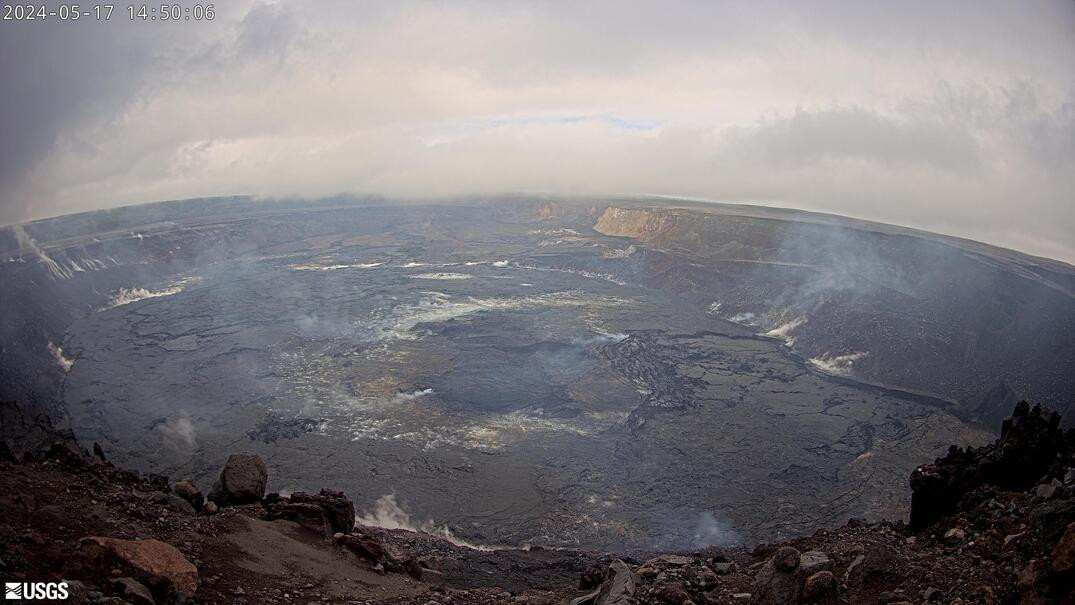
from interactive USGS map showing the location of recent earthquakes, mostly beneath the caldera south of Halemaʻumaʻu
(BIVN) – Kilauea volcano is not erupting, although another pulse of heightened unrest appears to have started overnight and continued into Friday evening.
The USGS Volcano Alert Level remains at ADVISORY and most of the elevated seismic activity is occurring under the south caldera region.
“Last night, there was a flurry of earthquakes under the south caldera region,” scientists wrote in Friday’s update, although as of 7:45 a.m. they noted that “things have settled down for now.”
Since that update, seismic activity has increased once again in the same south caldera region.
The USGS Hawaiian Volcano Observatory also reported:
Ground deformation continues beneath Halemaʻumaʻu and the south caldera region. The Uēkahuna tiltmeter northwest of the summit showed overall slight inflationary tilt over the past day. At the same time, the Sand Hill tiltmeter southwest of the summit showed west-northwest inflationary tilt in the south caldera region.

From USGS: Earthquake Rates and Depths on Friday afternoon. Above Top: Number of earthquakes per day during the past week (blue bars). The red line is the cumulative moment (energy) release. Bottom: Depth of earthquakes during the past week in the area shown on the map above. Depth is reported relative to sea level, which is equal to a depth of zero on the above plot. On both figures, circle-size represents magnitude, and color indicates depth.
The USGS HVO also provided this analysis:
Magma has been pressurizing the system beneath Halemaʻumaʻu and the south caldera region, activating seismicity along faults in the upper East Rift Zone. At this time, it is not possible to say whether this increase in activity will lead to an intrusion or eruption in the near future, or simply continue as seismic unrest at depth. Changes in the character and location of unrest can occur quickly, as can the potential for eruption.
There are no reported closures within Hawaiʻi Volcanoes National Park due to the current activity.
The USGS Hawaiian Volcano Observatory says it will provide daily updates while Kīlauea volcano is in a heightened state of unrest.


by Big Island Video News3:59 pm
on at
STORY SUMMARY
HAWAIʻI VOLCANOES NATIONAL PARK - Another pulse of heightened unrest appears to be underway in the summit area of Kīlauea volcano.